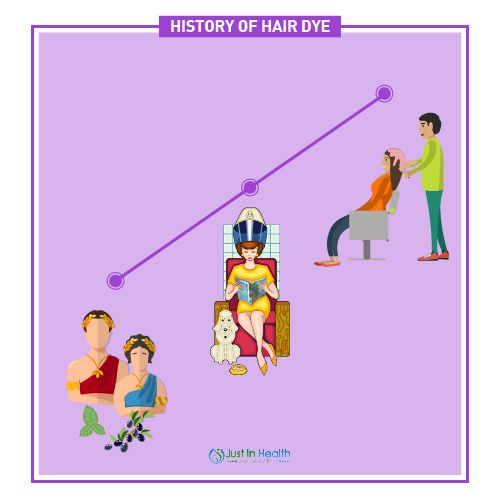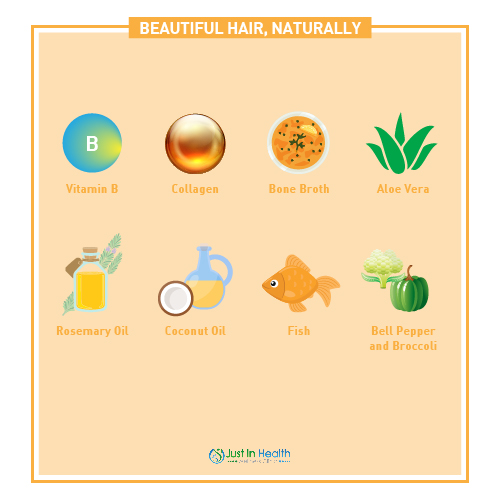

By Dr. Justin Marchegiani
Last month a shocking study revealed that women who dye their hair have higher rates of cancer. If this is true, the implications affect an estimated 75% of women in the US who dye their hair. Let’s dive into the study results and take a closer look at the risks of dying your hair.

Having dyed hair has become commonplace, but not too long ago it was a rarity! In 1950 only about 7% of women dyed their hair. Now, around 75% of women dye their hair.
Back in Ancient Rome, women dyed their hair blonde with pigeon dung and ashes! After rubbing it into the strands, they had to add urine to act as ammonia and strip the hair of color. This sounds gross, and we’ve come along way from using essentially sewage to color our hair. Unfortunately, the chemical cocktail used on our heads these days may be presented nicer, but a breakdown of the ingredients may still alarm you.

A new study in the International Journal of Cancer reports a link between use of hair products, including dye and straightening treatments, and cancer.
The researchers also uncovered the following data:
Dye isn’t the only hair product to be aware of: most styling products contain dangerous chemicals, toxic fragrances, and other endocrine-disruptors. The average woman uses 12 personal care products a day containing 168 different chemicals, many of which lack sufficient safety data. Chemicals in mainstream hair products are linked to hormone disruptions, allergies, birth defects, organ damage, and even cancer.
“Fragrance” is a secret ingredient that seems to be lurking in everything these days, including hair dye, conditioning treatments, detangler, hair spray, and shampoo. This deceptive marketing term is a catch-all term used on ingredient lists to indicate a ‘trade secret’ recipe that can contain hundreds of synthetic chemicals–none of which has to be disclosed or even safety tested. What about the chemicals that have been tested? Many cause reproductive harm, respiratory issues, and some are known neurotoxins and carcinogens.
For example, phthalates are a key components in plastics. Dimethyl phthalate is a common ingredient in hair spray, though its presence is often not noted on labels. According to the EPA, known effects of short-term exposure via inhalation are irritation of the eyes, nose, and throat. Meanwhile, “no information is available on the chronic (long-term), reproductive, developmental, or carcinogenic effects of dimethyl phthalate in humans. Animal studies have reported slight effects on growth and on the kidney from chronic oral exposure to the chemical.”
One would hope for more of a proven safety track record of dimethyl phthalate as an ingredient in products that are used on a habitual basis, multiple times per week over the course of many years. Unfortunately, that is not always the case when it comes to personal care products.

If you are ready to embrace your natural hair and are looking for ways to support its health, growth, and shine, there are supplements and topical treatments you can safely use for more luscious locks!
It’s important to be aware of the risk associated with using products such as hair dye and relaxers. While dye alone may not be the sole cause of breast cancer for every individual, by knowing the potential risk, you can make informed decisions regarding the products you choose to buy and have exposure to.
Ready to take your health to the next level? Click here to work with a functional medicine doctor!
References:
https://onlinelibrary.wiley.com/doi/abs/10.1002/ijc.32738
https://www.ncbi.nlm.nih.gov/pmc/articles/PMC1740925/
https://www.national-toxic-encephalopathy-foundation.org/fragsmoke.pdf
https://www.ncbi.nlm.nih.gov/pmc/articles/PMC5093181/
https://www.ncbi.nlm.nih.gov/pubmed/28683407
https://www.ncbi.nlm.nih.gov/pmc/articles/PMC1253722/
https://www.ncbi.nlm.nih.gov/pubmed/9577937
https://www.ncbi.nlm.nih.gov/pubmed/20183522
https://www.ncbi.nlm.nih.gov/pubmed/16283906
https://www.epa.gov/sites/production/files/2016-09/documents/dimethyl-phthalate.pdf